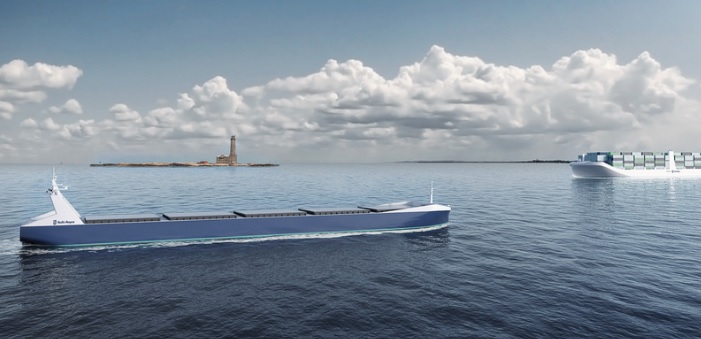Autonomous vessels are quickly becoming a reality. In the following article, the North P&I Club summarises the current state of play, consider possibilities for the future and outline some of the emerging risks this technology presents.
As explained, the terms ‘remote-controlled’, ‘unmanned’, ‘automated’ and ‘autonomous’ have all been used when describing the new technology, but they all mean very different things. It is very possible that, in the future, vessels could be remote-controlled but still retain some onboard manning. Or perhaps they will be traditionally manned, where autonomous systems are used as a decision support tool.
Levels of autonomy
Lloyds Register has introduced a system of autonomy levels, which is based on the intended level of onboard manning, human oversight and intervention and the level of autonomous decision making of onboard systems:
- AL 0: Manual control
No autonomous function. All decision-making and actions performed by a human located either on board or remotely
- AL 1: Onboard decision support
All actions taken by human operator, but decision support tool can present options or otherwise influence the actions chosen. Data is provided by systems on board.
- AL 2: Onboard and off-ship decision support
All actions taken by human operator, but decision support tool can present options or otherwise influence the actions chosen. Data may be provided by systems on or the vessel.
- AL 3: Active human in the loop – monitors and authorises
Decisions and actions are performed autonomously with human supervision and authorisation.
- AL 4: Human in the loop – monitors and intervenes
Decisions and actions are performed autonomously with human supervision. High impact decisions give human operators the opportunity to intervene and override.
- AL 5: Monitored fully autonomous
Rarely supervised operation where decisions are entirely made and actioned by the system.
- AL 6: Fully autonomous
Unsupervised operation where decisions are entirely made and actioned by the system during the mission.
Key challenges to the adoption
New technologies adopted every day have brought a notable disruption in the maritime industry. However, North Club stressed that there are key challenges that must be overcome, before ocean-going unmanned and fully autonomous vessels can become a viable option:
- Decision making ability: It is likely that autonomous decision making will be a combination of rule-based actions and artificial intelligence (AI). At present AI systems are not capable of the complex decision making required to control all functions and operations necessary for the safe completion of a voyage.
- Reliable satellite data links: The data exchange between ship and shore for remote controlled and autonomous vessels is expected to be massive. The current bandwidth capabilities are not sufficient to cope with large scale operations, but providers are working to meet these expected demands.
- Power generation and propulsion: Very low maintenance equipment and systems will be needed for unmanned vessels and this precludes diesel engines. Battery technology may be the future but it is not yet sufficient to meet the power demands of a commercial ocean-going cargo vessel.
What about the role of the seafarer?
The adoption of unmanned technology does not undermine human role. The skills of the seafarer will need to develop in order to work with the new technology, according to the Club. Technical staff, such as marine engineers and electro-technical officers, will need to understand, maintain and interact with new systems.
In addition, although technology is rising, unmanned vessels will not present a viable business case for many vessel types and trades, the Club noted. For some shipowners, the savings in onboard manning costs will not offset the investment needed to build such a vessel.
Also, the importance of the human’s role in safe vessel operation must not be underestimated. Despite the much vaunted statistic that the vast majority of incidents are caused by human error, the fact that human intervention has actually prevented or mitigated events is often forgotten. Besides, the human element is not eliminated on an unmanned or autonomous vessel – it is merely shifted somewhere else.
There is also the role of the remote operator to consider, which during the first few generations of autonomous vessels is likely to be filled by mariners making the move ashore.
But it is possible that in the long term, remote operations could be carried out by people who have no actual sea-going experience. Furthermore, would a remote operator’s attitude to risk differ from someone actually on board?
Regulation
Currently, there are no IMO regulations in place that specifically address unmanned and autonomous vessels, but even when the regulations have been created, significant challenges will be faced in enforcing them, says North Club. As such, it is likely in the short-term that remote and autonomous vessels operations will be restricted to domestic trading only.
The lack of clarity on legislation has an obvious impact on the provision of insurance for an unmanned or autonomous vessel.


Comments
Post a Comment